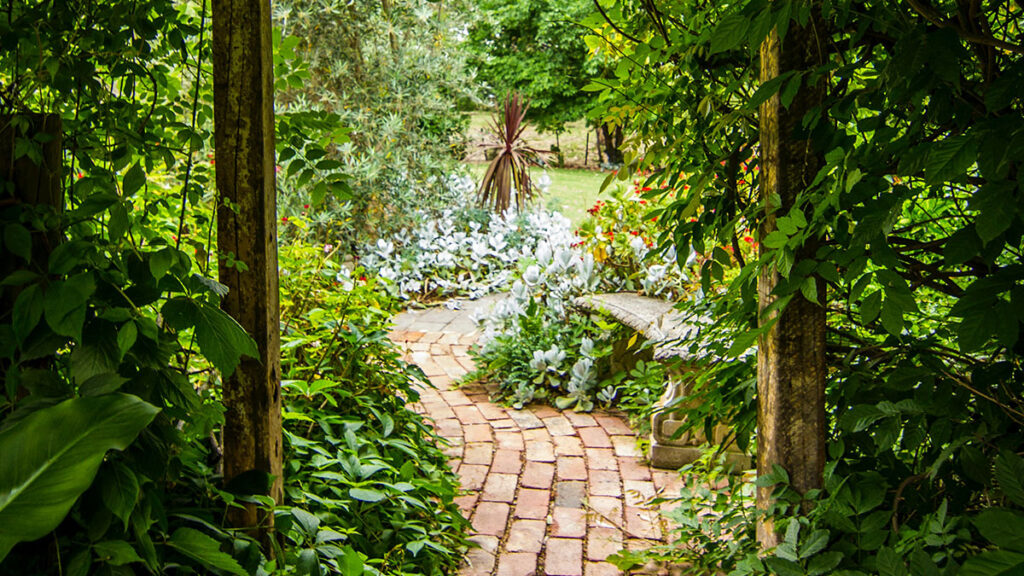Understanding Plant Watering Needs
Properly understanding the watering needs of your garden plants is essential for maintaining a healthy and thriving outdoor space. Different factors influence how much and how often you should water, as well as the specific requirements based on the types of plants in your garden.
Factors Influencing Watering
Several variables can impact how much water your plants need:
- Plant Type: Different plants have unique watering preferences. For instance, succulents from arid regions require less frequent watering, while tropical plants like Monstera deliciosa thrive with more moisture (The Sill).
- Soil Type: Soil composition affects water retention. Sandy soils drain quickly and may require more frequent watering compared to clay soils, which retain moisture longer.
- Climate Conditions: Weather plays a significant role. Hot, sunny days increase evaporation rates, necessitating more frequent watering.
- Plant Size: Larger plants with more extensive root systems typically need more water than smaller plants.
Here’s a quick reference for general watering needs based on soil and climate:
| Soil Type | Water Retention | Recommended Frequency |
|---|---|---|
| Sandy | Low | Every 2-3 days |
| Loamy | Moderate | Every 3-5 days |
| Clay | High | Every 7-10 days |
Watering Based on Plant Types
Understanding the specific watering requirements of different plant types is crucial. Below is a table summarizing the typical watering habits for common garden plants:
| Plant Type | Watering Frequency |
|---|---|
| Succulents | Every 2-3 weeks |
| Tropical Plants | Every 1-2 days |
| Vegetables | Once a week, about 1 inch |
| Flowering Perennials | Every 3-5 days |
| Seedlings | Twice a day until established |
Most houseplants prefer warm or tepid water as it absorbs better into the soil. Also, if you use tap water, letting it sit overnight can help dissipate chlorine, making it more suitable for sensitive plants.
Monitoring your plants for signs of overwatering or underwatering is also essential. Signs of overwatering include brown leaves, drooping stems, moldy soil, stunted growth, and root rot. In contrast, underwatering can cause wilting leaves, dry soil, and brown or crispy foliage (Martha Stewart).
By considering these factors and understanding the specific needs of your plants, you can create an effective garden watering schedule that fosters a lush and productive garden. For further insights on maintaining your garden, check out our articles on how to maintain a garden and garden maintenance tips.
Establishing a Watering Routine
Creating an effective garden watering schedule is essential for maintaining healthy plants. Understanding the importance of flexibility in your routine and making adjustments for seasonal changes can lead to thriving greenery.
Importance of Flexible Schedules
Plants require varying amounts of water based on their individual needs and environmental conditions. For example, succulents from arid regions prefer infrequent watering, while tropical plants like Monstera deliciosa need more frequent hydration (The Sill). Following a strict schedule, such as watering only on a specific day each week, may not suit all plants. It is more beneficial to check soil moisture levels and water accordingly.
Here’s a simple guide to help you determine how often to water based on pot size and type:
| Pot Size | Watering Frequency |
|---|---|
| Small (less than 6 inches) | Every 2-3 days |
| Medium (6-10 inches) | Every 4-7 days |
| Large (10 inches and above) | Once a week or as needed |
Adapting your routine to the specific requirements of your plants ensures they receive the right amount of moisture.
Adjusting for Seasonal Changes
Seasonal changes significantly impact the watering needs of your garden. As temperatures rise in summer, your houseplants will likely require more frequent watering. Conversely, in winter, cooler temperatures may reduce your plants’ water demand (The Sill). Most established gardens generally need about 1 inch of water per week from combined rainfall and watering efforts.
To make adjustments based on the season, consider:
- Summer: Increase watering frequency, especially for sun-loving plants.
- Fall: Gradually reduce watering as temperatures start to drop.
- Winter: Monitor closely; many plants need significantly less water.
- Spring: Resume normal watering as plants begin to grow actively again.
By recognizing and adapting to the fluctuating moisture needs throughout the year, you can ensure that your plants remain healthy and well-cared for. For additional tips on maintaining your garden, explore our comprehensive guide on how to maintain a garden.
Best Practices for Efficient Watering
Effective watering is crucial for maintaining a healthy garden. Here are some best practices to optimize your garden watering schedule.
Ideal Watering Times
Timing plays a significant role in plant hydration. The best time to water your plants is early in the morning, around 5 am to 6 am. This timing prepares the plants for the day ahead, allowing them to absorb the moisture before the sun’s heat intensifies (DripWorks).
If morning watering is not feasible, evening watering is a suitable alternative. Watering in the evening can help cool the plants and allow them to retain moisture overnight. However, avoid watering during midday as it can cause rapid evaporation due to peak temperatures.
| Watering Time | Benefits |
|---|---|
| Morning (5 am – 6 am) | Prepares plants for the day, allows for moisture absorption |
| Evening | Cools plants, helps to retain moisture overnight |
| Midday | Not recommended due to high evaporation rates |
Most established gardens need about 1 inch of water weekly, which can include both rainfall and your watering efforts. Adjust the frequency of watering based on plant types and seasonal changes for the best results.
Signs of Proper Watering
Recognizing the signs of proper watering is essential to ensure that your plants are receiving adequate hydration. Here are some indicators that your plants are well-watered:
- Soil Moisture: The top 2 inches of soil should feel moist but not soggy. If it feels dry, it’s time to water.
- Leaf Color: Healthy plants typically have vibrant green leaves. If leaves appear yellow or wilted, it may be a sign of insufficient water.
- Growth Patterns: Consistent growth and new shoots are good indicators that your plants are receiving the necessary moisture.
Observing these signs can help inform your garden maintenance tips and lead to a more effective watering schedule. When in doubt, you can also perform a soil test to assess moisture content and determine whether it’s time to water.
Optimizing Watering Systems
Creating a tailored watering schedule can significantly enhance the health of your garden. To maximize efficiency in your watering routine, consider incorporating timers and drip irrigation systems in your setup.
Importance of Timers
Timers play a critical role in optimizing your garden watering schedule. They allow you to modify watering periods based on changing weather patterns. For instance, you can set timers to automatically shut off if rain is forecasted or extend watering duration during hot spells. This flexibility leads to water conservation and ensures that your plants receive just the right amount of moisture.
Implementing an automatic timer is efficient and helps you maintain a consistent watering routine, eliminating the need for manual adjustments. Below is a simple table that outlines typical timer settings you might consider based on common garden conditions.
| Weather Condition | Suggested Timer Setting |
|---|---|
| Overcast/Rainy | Off |
| Mild Weather (60-75°F) | 15-30 minutes |
| Hot Weather (75-90°F) | 30-60 minutes |
| Extremely Hot (90+°F) | 60+ minutes |
Benefits of Drip Irrigation
Drip irrigation is another innovative approach you should consider for watering your garden. This method delivers water directly to the roots of your plants through a system of tubes and emitters, maximizing efficiency while minimizing waste.
The primary benefits of drip irrigation include:
- Water Conservation: Since water is delivered directly to the root zone, this method drastically reduces runoff and evaporation, making it a sustainable choice for your garden.
- Reduced Fungal Growth: By keeping foliage dry, drip irrigation helps minimize the risk of fungal diseases that thrive in moist environments.
- Improved Plant Health: By providing consistent moisture, plants are less stressed and more likely to thrive. Drip irrigation systems can be set to operate during the coolest parts of the day, further enhancing plant health by preventing rapid evaporation.
Using a timer in conjunction with a drip irrigation system provides the most efficient method of watering. This combination allows you to set specific schedules and ensure your plants receive the right amount of water at the right time (DripWorks).
By optimizing your watering system with timers and drip irrigation, you can ensure your garden remains healthy while conserving water. For more garden care tips, refer to our section on garden maintenance tips.

